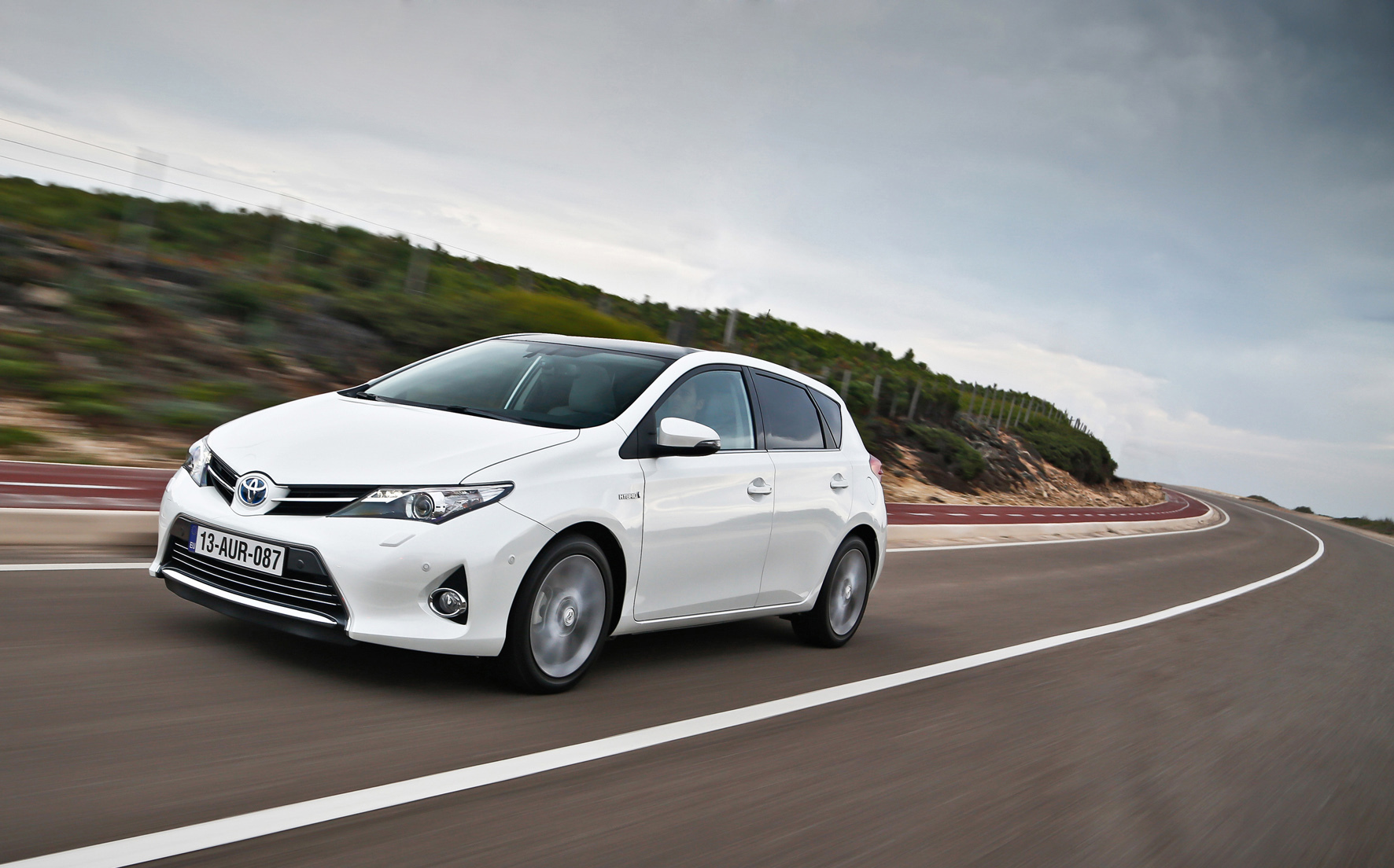First Drive: Toyota Auris Hybrid Synergy Drive
You could bundle the new Toyota Auris into the same normal, everyday C-segment group as other compact family hatchbacks, but at least as far as the hybrid model is concerned, the fit isn’t quite so snug.
This is the 2013 Auris, which is an almost complete change from the last model both in terms of looks and what’s under the skin.
A list of changes and improvements that could stretch to the moon and back have certainly moved the car’s game on.
In the main, you get exactly what you expect from a Toyota of this size. Four wheels, five seats, a useful dual-floor boot and more is all standard fare.
Just a glance at the spec sheet shows things have changed, though. A new wave of trim levels awaits; the result of focus groups, owner feedback and dealer recommendations.
The range now starts with Active, moving up to the likely big-selling Icon, then the self-explanatory Sport and the luxury equipment-biased Excel at the top of the tree.
Toyota is predicting about half of the Auris’ sales will come in Icon spec, and for good reason.
As well as the climate control, USB connection and heated, electrically adjustable mirrors that are standard even on Active spec, Icon lays down a mighty gauntlet to the opposition with alloy wheels, DAB radio, a touchscreen media interface, Bluetooth connectivity, a rear-view camera, electric windows all round, leather-trimmed contact points in the cabin and front fog lights.
This car, however, is a range-topping Excel machine with larger 17in alloys, dual-zone climate control, half-leather seats including heating for the front two, automatic lights and wipers, a full parallel-park assist system with front and rear sensors, cruise control and adjustable driver’s seat lumbar support. Privacy glass and an auto-dimming rear-view mirror are further perks.
As far as engines go, there’s a choice of efficient small-capacity petrol and diesel engines, plus a pokier 1.6-litre petrol and Toyota’s truly excellent Hybrid Synergy Drive. It’s the latter on test here, since the predictions are that around 40% of buyers will plump for the eco-conscious and road tax-free petrol-electric model. It will be built in Icon and Excel trim only.
It’s a drivetrain designed primarily for silky transport around urban and suburban traffic battlegrounds, where the fully enclosed hybrid system does its thing by recouping energy from braking, always seeming to have enough electric power available where it’s most needed and where it will save the most fuel.
Anyone who hasn’t driven it yet, really should try it, because after generations of development, it’s something of a tour de force. It’s exceptionally refined, reliable and – when used as it’s meant to be – marvellously efficient.
It’s quite easy to use the electric motor as much as possible, simply by being smooth and not using more throttle than you need to. Three driving modes provide three levels of choice biasing the drivetrain more towards the 1.8-litre petrol engine or the electric motor. Eco Mode is the halfway house and generally the best bet.
What the drivetrain doesn’t provide is oodles of pace above 50mph or so. Up to that point, it’s torquey enough, but beyond there the noise-to-performance ratio, partially due to the standard continually variable automatic transmission that encourages the revs to drift very high and stay there, starts to count against the driving experience.
Plenty has been done to improve the Auris behind the wheel, though, with additional spot welding and new production techniques adding noticeable extra stiffness to the body.
The car now stays planted and true when faced with mid-corner expansion joints or potholes. The steering is a mixed bag, with a pleasingly direct and accurate link to the front wheels compromised slightly by a lack of feel.
From the driver’s seat, the view is very Toyota and its simplicity will appeal to some more than others. What’s beyond doubt is the outright solidity of the build and the comfort from what are some of the best seats in the C-segment. Most of the buttons are large, well located and clearly labelled; if perhaps not as stylish as they could be.
The optional and amusingly named Touch & Go satnav system is optional on Icon, Sport and Excel models, and although its attempts to pronounce place names phonetically sometimes fall flat, it’s one of the best systems available for the visual clarity of its instructions and for the simple stylishness of the display.
Practical touches such as a particularly large glove box and a deep central storage bin make up for slightly restrictive door pockets, and the 360-litre boot is well shaped with dual floors for extra load-carrying flexibility. Rear legroom is ample and the roof line doesn’t impinge too greatly on headroom.
All in all, the new Auris is a very fine package.
FACTS AT A GLANCE
Model: Toyota Auris Excel Hybrid Synergy Drive, £21,745 on the road.
Engine: Petrol-electric hybrid with 1.8-litre four-cylinder petrol engine.
Transmission: Continually variable transmission driving the front wheels.
Performance: Top speed 112mph, 0-62mph in 10.9 seconds.
Fuel economy: 72.4mpg (76.3mpg with 15-inch wheels).
CO2 rating: 91g/km (87g/km with 15-inch wheels).
Latest posts by Sally - Silversurfer's Editor (see all)
- 5 edible uses for Borage - April 28, 2024
- How to keep your tulips lasting longer - April 25, 2024
- Do you sleep with a snorer? - April 25, 2024
- Holiday hack: How to win a GHA DISCOVERY Titanium status upgrade - April 23, 2024
- British Asparagus and Pea Risotto with Lemon and Crème Fraiche - April 23, 2024





















